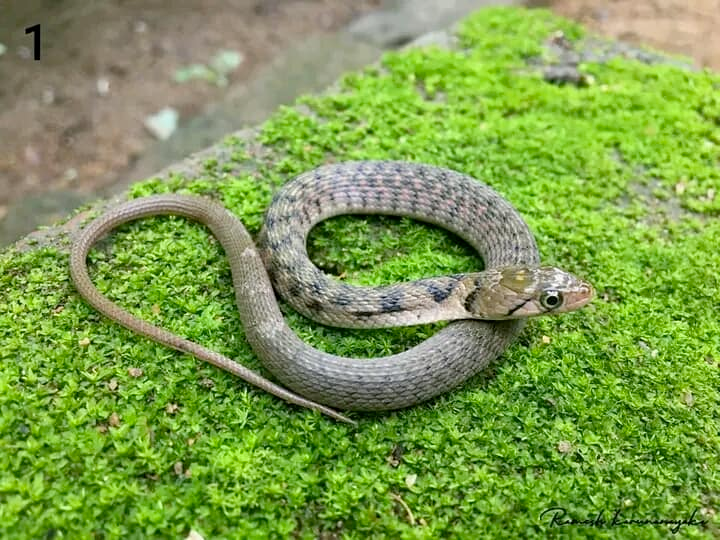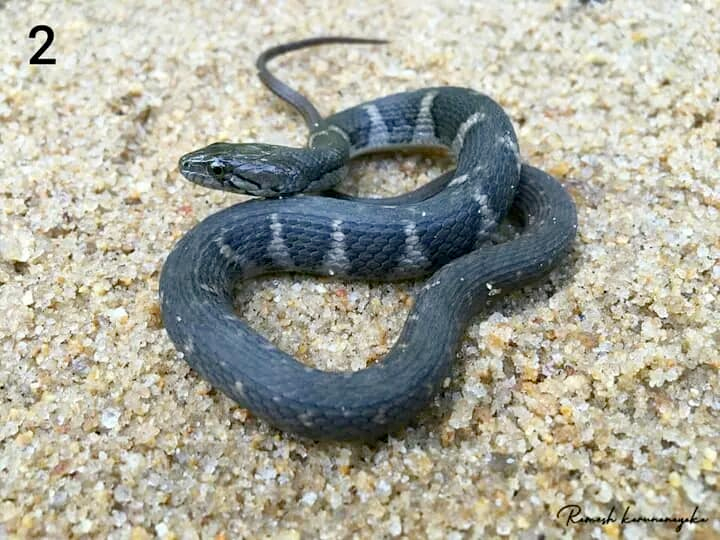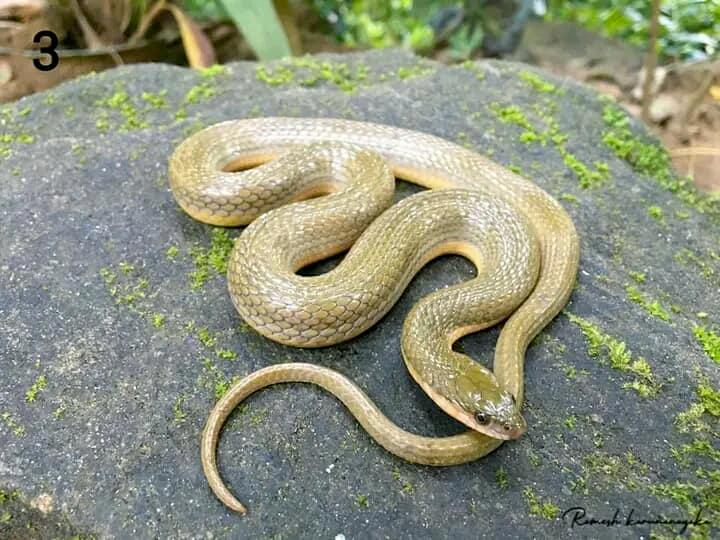Aquatic snakes commonly found in freshwater environments
In general, snakes are known as very dangerous animals in the society, the superstitions and folklores from the past are one more reason for the spread of fear and disgust among people about snakes.. But snakes are an unappreciated group of animals that quietly contribute to maintaining the balance of the environment.. This Meanwhile, we see several waterside snakes that we regularly meet.. Waterside snakes are also a group of animals that perform a great mission to keep the water clean by purifying water-related garbage in addition to maintaining the ecological balance. And it is said that #दियबारीक was kept in the pond, as a respect for the work done by those animals.
This is a brief description of them.
1 Sea tikiri Keelback (Fowlea unicolor) (Diyanaya)
Identification –
A cylindrical body with a short dorsal surface and a slightly indistinct neck can be seen. A round eye can be seen. The scales are rough with a distinct scutellum (a slightly elevated line-like nature in the middle of the scale). Several color variants are seen. Most are superficially shiny olive-brown, yellow-brown, or gray. The black uneven markings are located in 5-6 rows along the body. Sometimes these black markings are bordered by a pink or red border. On the other side of the body, these signs are not so obvious. There are two black lines behind the eyes. There is a black ring like shape on the neck. The head is olive-brown in color. Abdominally white or yellow in some cases pink color can also be seen.
behavior -
Shows diurnal as well as nocturnal behavior. Commonly found in water bodies, rice paddies, lakes, ponds etc. in aquatic environments. They bite very quickly and try to bite by flattening the neck area of the body when they are upset.
Length at birth 100 mm - 400 - 600 mm.
- Females are larger in size.
Fish eat frogs and reproduce through eggs. (6 - 90 eggs at a time)
#Non-venomous but can bite causing injury.
Commonly found in dry and semi-humid zone up to 1000m above sea level....

2 Boulenger's Keelback/ (Fowlea asperrimus)
Identification –
A cylindrical body with a short dorsal surface is seen. The body is slightly indistinct, rough scales and clear gills are visible. The eyes have a round lens. Dorsally olive-brown. Large black cross bands or spots on the anterior half of the body are seen on both sides of the body. Two black lines can be seen running behind the eyes. The head is darker in color and ventrally white or yellowish.
behavior -
Shows diurnal as well as nocturnal behavior. Commonly found in mudflats, fields, lakes, river ponds, etc. They are also very biting and try to bite with their heads flattened when disturbed. Jambali also emits foul-smelling secretions.
Length at birth 100mm - 400 - 700mm
- Females are larger in size
Fish feed on frogs and reproduce through eggs (up to 4 - 30 eggs at a time).
#Non-venomous but can bite causing injury.
Commonly found from sea level up to 1000m in the intermediate and wet zone. - A snake endemic to Sri Lanka

3 Atretium schistosum
Olive Keelback
Identification –
Anteriorly and posteriorly with a somewhat thin dorsal body. The heads of young animals are relatively large, while the heads of adults are small. Homba is short. Eyes with a circular lens are seen. A rounded belly and a long tail can be seen. The coral is very pale. The surface is olive-green or olive-brown in color. Young animals have a thin black line from the eye to the back and two broad red bands running the length of the body. Sometimes a row of black dots in two rows is seen dorsally along the length of the body. The area between these lines is darker. Well-grown animals have a single color dorsally. The upper lip and belly are yellow, orange or white.
behavior -
Diurnal as well as nocturnal behavior is seen. It is commonly found in freshwater ecosystems such as rivers, ponds, and lakes. It can also be found in mangroves and lagoons. It can dig and sink in mud and sand. When disturbed, the body flattens but usually does not try to bite.
100 MM at birth 300 - 500 MM grown
Feeds on shrimp, frogs, fish, aquatic insects, spiders, shrimps and mosquito larvae and reproduces by eggs (10 - 32 at a time).
#Non-venomous and often does not try to bite.
Commonly found along the coast from sea level up to 1000 meters.

#blurt #blurtstory #snakes #animal #beautiful #forest #sea #freshwater